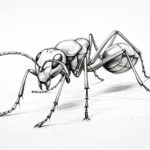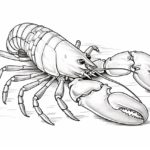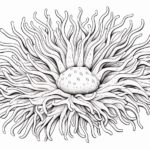Welcome to this fun and detailed step-by-step guide on how to draw a shrimp! Shrimp may seem small and simple at first glance, but they’re fascinating creatures full of unique shapes, textures, and flowing forms. Learning how to draw a shrimp is a great way to practice observing detail, capturing curves, and working with delicate structures like segmented bodies, antennae, and tiny legs.
Whether you’re an aspiring artist looking to expand your skills, a marine life enthusiast, or someone just searching for a creative and enjoyable project, this tutorial will guide you through every stage of the process. We’ll break down the shrimp’s complex form into simple, easy-to-follow steps so you can create a realistic and lively drawing with confidence. So grab your pencils, paper, and a sense of adventure—let’s dive into the world of underwater art and bring a shrimp to life on your page!
Materials Required
Before we begin, make sure you have the following materials:
- Drawing paper: Choose a good quality paper that is durable and suitable for your preferred drawing medium.
- Pencil: Use a pencil with a medium or soft lead, which allows for easy shading and erasing.
- Eraser: A kneaded eraser works best for clean and precise erasing.
- Fine-tip pens or markers (optional): If you want to add ink outlines or details to your drawing, pens or markers can be used.
- Colored pencils or watercolor paints (optional): If you wish to add color to your drawing, colored pencils or watercolor paints can be used.
Now that you have your materials ready, let’s dive into the step-by-step process of drawing a shrimp.
Step 1: Basic Shapes
Begin by lightly sketching the basic shapes that make up the shrimp’s body. Start with an oval shape for the main body, slightly elongated towards one end. Add a smaller oval shape for the head, attaching it to the larger oval. Finally, draw two elongated shapes for the shrimp’s antennae.
Step 2: Add Details to the Body
Next, start adding more details to the shrimp’s body. Sketch the outline of the body, following the basic oval shape. Pay attention to the curves and contours of the shrimp’s body, making it appear more realistic. Add some lines to define the segments of the body, creating a textured effect.
Step 3: Draw the Eyes
Moving on to the head, draw the shrimp’s eyes. Shrimp have stalked eyes, so sketch two small circles on stalks at the front of the head. Add a tiny dot inside each circle to represent the pupils. This will give the shrimp a more lifelike appearance.
Step 4: Antennae and Legs
Now, let’s focus on the shrimp’s antennae and legs. Using the shape you sketched earlier, add more detail to the antennae. Shrimp have long, thin antennae that can be curved or straight. Draw several segments along the length of each antenna to make it more realistic. For the legs, draw a series of curved lines extending from the body. Shrimp have five pairs of legs, so make sure to draw ten in total.
Step 5: Finishing Touches
To complete your shrimp drawing, refine the details and add any additional touches. Pay attention to the texture on the shrimp’s body, adding small lines and bumps to create a realistic effect. Erase any unnecessary guidelines or overlapping lines. If you want to take your drawing to the next level, you can outline your pencil drawing with fine-tip pens or markers to create a bold and defined look. Additionally, you can add color using colored pencils or watercolor paints to enhance the vibrancy of your artwork.
Conclusion
Congratulations! You have successfully learned how to draw a shrimp from start to finish. By following these step-by-step instructions and adding your creativity, you’ve created a detailed and realistic representation of this fascinating creature. Remember, practice makes perfect, so keep exploring different drawing techniques and subjects to continue honing your artistic skills. Enjoy the process and have fun with your new drawing abilities!
Gallery of Shrimp Drawings
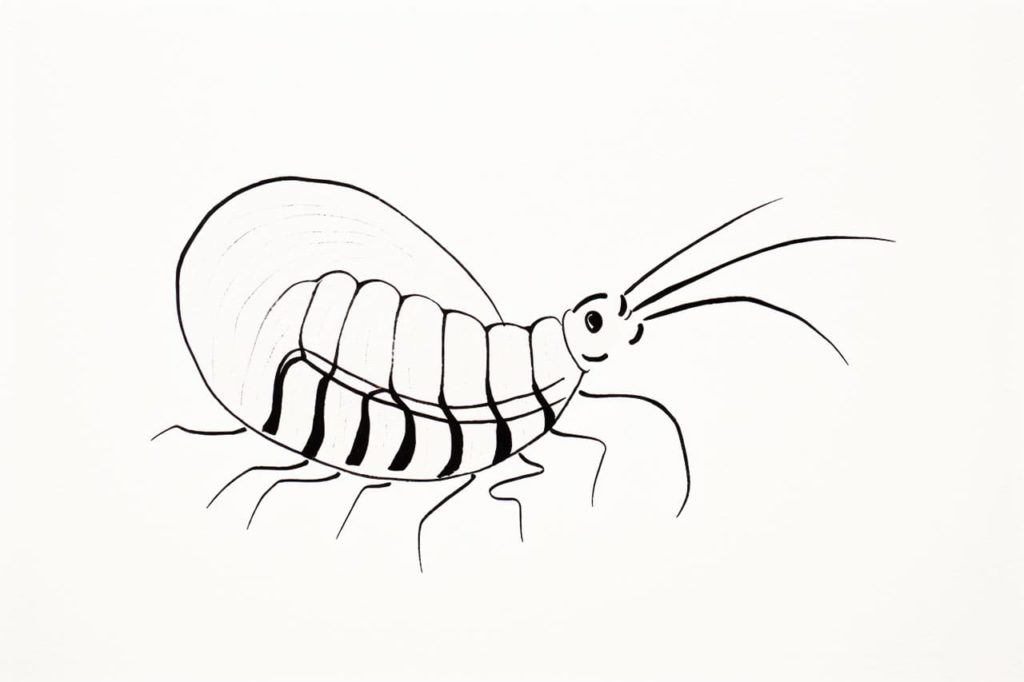

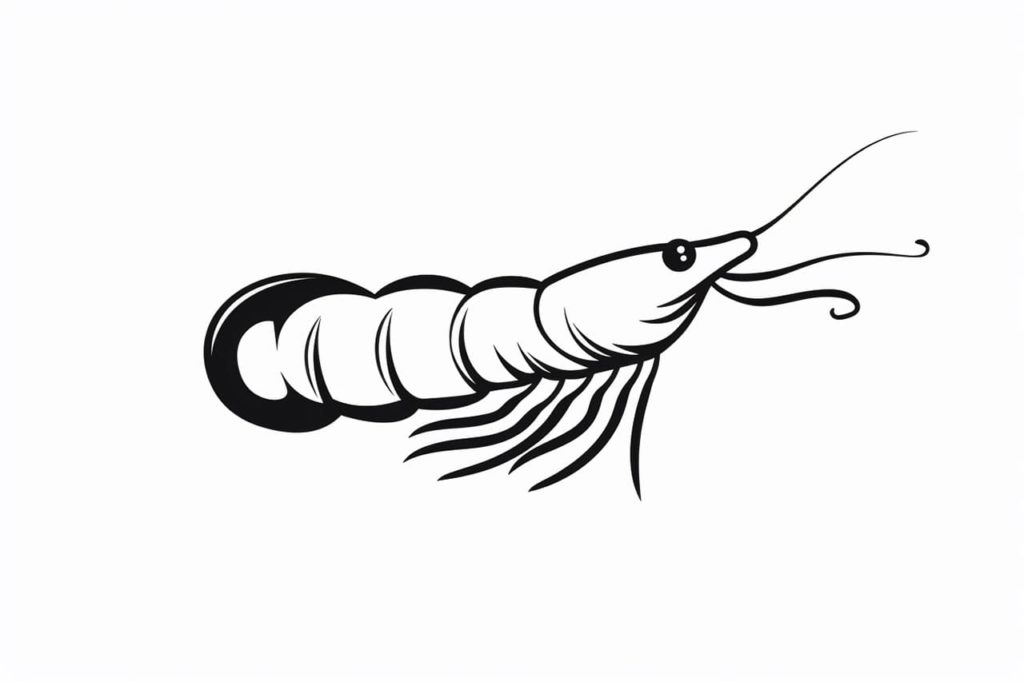
Fun Facts About Shrimps
- Shrimps are decapod crustaceans, meaning they have ten legs and are closely related to crabs and lobsters.
- There are over 2,000 different species of shrimps found all over the world, in both welcoming warm and icy cold waters.
- Shrimps can swim backward by quickly flicking their tails, a skill that helps them escape predators.
- The Praying Mantis Shrimp has one of the most powerful punches in the animal kingdom, used for catching prey.
- Shrimps are known for cleaning parasites from the skin of other sea creatures in a mutually beneficial relationship.
- Many shrimps have a symbiotic relationship with sea anemones, gaining protection from predators while offering cleaning services.
- Some deep-sea shrimps can produce bioluminescent light to confuse predators or attract mates.
- Shrimps have specialized eyes that can distinguish between different light spectrums, including ultraviolet light.
- Certain shrimps can live up to 7 years, which is quite long for such small creatures.
- Like lobsters, shrimps undergo molting to grow, shedding their hard exoskeleton to form a new one.
Suggestions for Scenes and Settings for Shrimp Drawings
- Coral Reef Party: Draw shrimps weaving through a vibrant coral reef, surrounded by colorful fish and striking anemones.
- Deep-Sea Exploration: Illustrate a scene of shrimps exploring a mysterious deep-sea trench, with bioluminescent creatures illuminating the dark.
- Shrimp Cleaning Station: Depict shrimps tending to fish as they clean their scales and gills in a symbiotic sea spa.
- Underwater Carnival: Design an animated world where shrimps partake in a vibrant underwater festival with seaweed streamers and bubble confetti.
- Mantis Shrimp Showdown: Capture the action of mantis shrimps squaring off in a fantastical fight ring beneath the waves.
- Shrimp and Seahorse Adventure: Create a whimsical scene of shrimps on an expedition with seahorse companions through twisting kelp forests.
- Polar Shrimp Moment: Place shrimps amidst chilly arctic waters, swimming gracefully among icebergs and puffin flocks.
- Shrimp Shipwreck: Illustrate an old sunken ship being explored by a curious band of shrimps, uncovering hidden treasures.
- Shrimp Starry Night: Imagine a poetic scene where shrimps swim under a twinkling blanket of stars reflected in the water’s surface.
- Shrimp Talent Show: Draw a comedic performance where shrimps take the stage, showcasing acrobatics and synchronized swimming skills.


